I am a passionate collector of Longines chronographs and I would like to dedicate a “love poem” to Longines 30ch chronographs, which was designed in 1947 after having ceased production of the previous and fantastic caliber 13ZN. The 30ch was produced until the early years of 70s.
I think that the 30ch is an authentic mechanical masterpiece, in my opinion probably the best chrono- caliber ever produced before the computer aided designed chronos of recent years.
Of course also Longines chrono calibers conceived and produced in Saint Imier before the 30ch were masterpieces of their time, always at the very top for technology and quality. Caliber 13.33z, the first high end chronograph wristwatch, was produced from 1912 to 1934, and the exceptional caliber 13zn was produced from 1937 to 1947. Those and 30ch are the only Longines chrono calibers totally in house conceived and produced; Longines also used Valjoux chrono-calibers between 1935 and 1937 (Valjoux 22gh and 13 greately finished) and from mid 70s to the beginning of the “quartz era” (i.e. Valjoux 72, 726 and 23 modified, those also very well finished). Valjoux-Longines calibers used to be very efficient and perfectly running so we have to respect them: infact I consider them also important Longines to collect easy because we find a lot for sale in very good or perfect condition.
Each class of Longines chronos – 13.33z, 13zn and 30ch (and Longines-Valjoux) – needs a dedicated study. Here I focus on the 30ch in a way that could be useful to new collectors and people passionate about great watches. Even if there are many reasons to say that this chronograph deserves the utmost attention, only a few years ago it found the right attention in the collector community, as confirmed by the constantly growing values registered on the market.
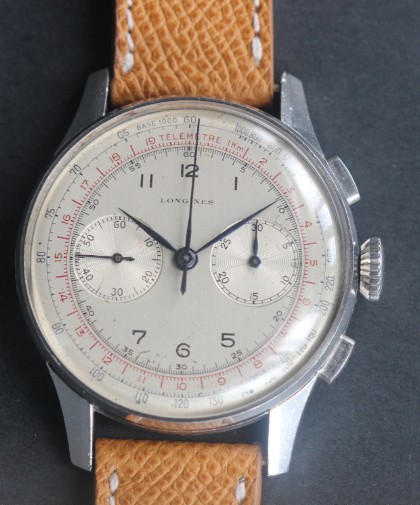
I will not offer a detailed technical analysis because there are true experts who can be more in-depth and precise than me … and the details that could be provided are so numerous that it would be necessary to write a monograph! Today I would like to offer an exciting article with essential info that will make people understand that discovering a Longines chronograph could be a matter of pure passion!
First of all I underline that the 30ch chronograph was made in many varieties of case: the form and style of the case determine the “reference” (for a car we would say the “model”); reference is the four-digit code written inside the case back. In the very first 30ch the reference is not written on the case back, where instead we find a five-digit code called “order number”, exactly as in the (steel) 13zn. To know the reference you need to ask to Longines Heritage Service (contact@longines.com), which finds the order number in its handwritten records and locates the matching four-digit reference. They are very kind and I recommend you to use this service to be sure of the authenticity of your watch.
I have classified as many as 28 so-called “first series” 30ch case references, equipped with non-soleil and non-sporting 70s dials. In the “second series” we can place 7 references (4 of which have soleil dials – ref. 7412/3/4/5 – and 3 with sports dials – ref. 7981 “Skin Diver”, 8225 “Nonius” and 1543 “Conquest”). But the references of the 30ch first series could be more than 28 because at the beginning of the production some 13zn cases were used to host the new 30ch caliber. In Longines they assigned to those watches a 30ch reference number. It was not difficult to create a 30ch using a 13zn case because 13zn cases can accommodate 30ch movements since the dimensions of the two calibres are very similar. But 13zn dials cannot adapt to 30ch movements. We have also to know that ‘first series’ 30ch have been in production also after the introduction of “second series” with soleil dial (i.e. 5982, 6552, 6592, 6595).
In my opinion the very first 30ch are the most fascinating because they mark the transition after the great and exceptional 13zn chronographs. The dials have only the logo-word “Longines” without winged hourglass, indexes are not applied but printed and hands and crowns (often) come directly from 13zn.
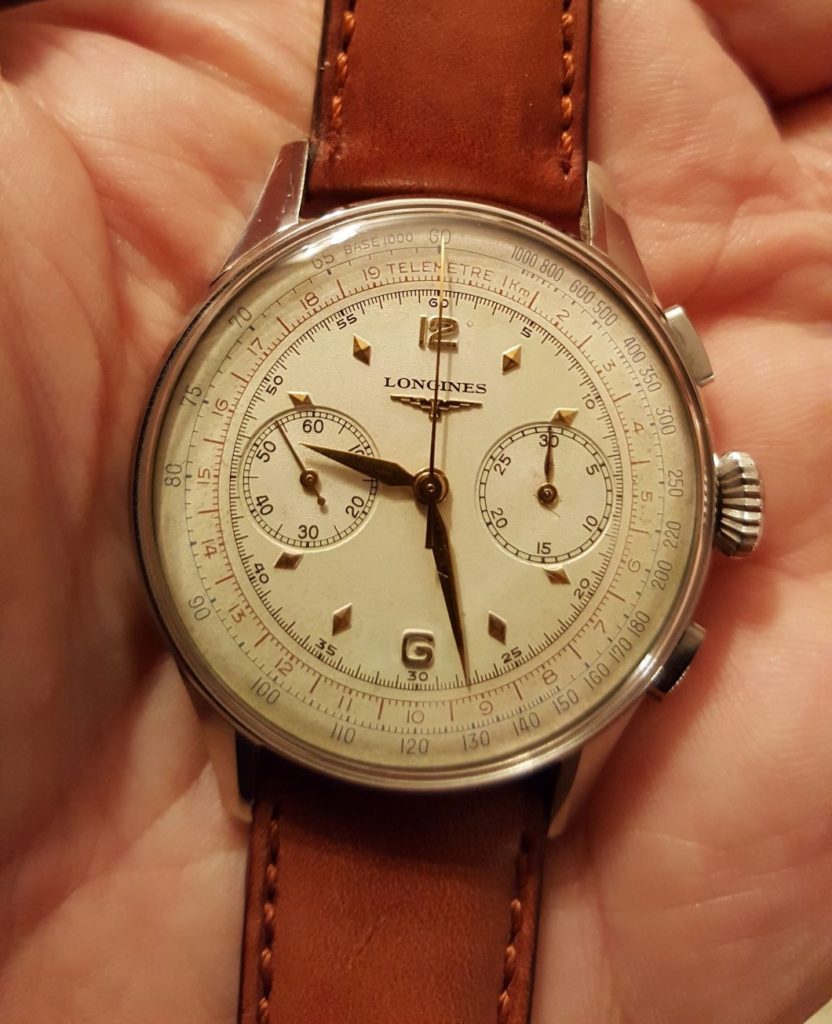
This look will not last long. After very few years (I think up to 1950 more or less) from the start of production, 30ch used to have at first applied indexes and then also a winged hourglass applied to the dial under the logo-word “Longines”.
Except for dials with arabic radio indexes of some references with round buttons (i.e. ref. 6075, 6474 and 6592), where the winged hourglass is only graphically stylized, and with the exception of the so-called “French” 30ch (I will talk about later).
The 30ch chronos were made in steel and gold (pink, 18kt yellow and 14kt yellow). Usually they have cases with pressure-closed back case and square buttons or with screw-closed backcase and round buttons. Each reference identifies only a case model but there are exceptions: i.e., cases with snap-back case and round buttons (a special version of ref. 5965) and “doppia linguetta” cases (ref. 6075 in steel, directly derived from 13zn “doppia linguetta”). A real world to explore!
Also the diameter of the case changed according to the reference. The maximum is 38+ mm, usually it is 37/37,5 mm, the minimum is 35.5 mm (ref. 5965), obviously crown excluded.
There is only one reference with a gold plated rose gold case (ref. 5971), which remained in production for a very short time due to the lack of success (… it is really ugly and bad looking!).

The 30ch chronos are exceptional also because of the wonderful dials. Original dials are only metallic.
Dials usually have three diameters with rounded border (35+ mm, 33+ mm and 30+ mm) with very cool colors. Rarely we find 32 mm dial with flat border. The more iconic dial layout is the one with blue tachymeter and red telemeter scales. But you can find dials with only tachy scale and medical dials. You can also find no-scale dials (there is only the indication of fifths of a second).
Original dials were covered by a transparent paint that gives them a “deep” effect; this paint with time can get ruined, producing micro dark dots, which are also a guarantee of the originality of the dial.
In any case, the variety of dials is smaller if compared to the 13zn, which also had a lot of case references, allowing even more combinations of reference.
As already seen, the 30ch dials basically are of two types, with the Longines word-logo and with word-logo and winged hourglass. Traditionally – as mentioned above – we mark the beginning of the 30ch second series with ref. 7412/3/4/5 but as shown this is not properly correct because some references used to be produced with characters of first series during presence on the market of second series.
Second series 30ch started to be produced from in last first half of 60s (1963-4); they are characterized by “soleil” finished dials (to better reflect light and create a more precious look) and stick hands and indexes (with or without tritium).
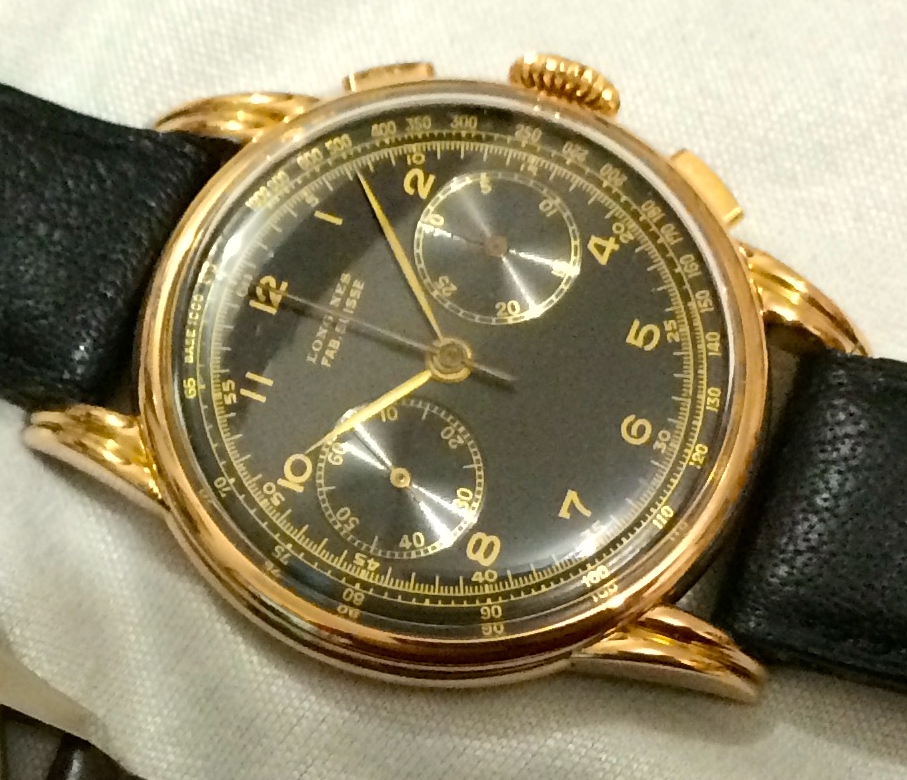
A special note is reserved for the 30ch chronos so called “french case”. Due to import restrictions on precious metals, Longines France used to receive 30ch calibers directly from Saint Imier and place them in very beautiful french-made gold cases (the same happened with the gold 13zn), with original dials (also dual tone, dual color and rarely black, a rarity in the 30ch universe) normally marked “Fab Suisse” under the word-logo and without applied winged hourglass.
We can find those chronos until 60s. They are little known but really interesting because both dials and cases allow combinations of great beauty and style (even if in common opinion economic value is less because they were not produced in Switzerland).
More infos can be added about hands, crowns, indexes, buckles etc.: there are some main rules about, that form a sort of a strict “dress code” to keep all those details matching correctly and create harmony in the whole watch. I prefer to not add more as it is better to allow collectors to have some experience for themselves. It is exciting even if it needs studying a lot!
Now it is necessary to focus briefly on the caliber, even if avoiding very technical details, as promised.
The 30ch caliber structure presents six bridges with a rhodium finish. The diameter is 29.8 mm (13.25 lignes – a ligne is 2,256mm), the thickness is 6.20 mm. It has a total of 18 jewels (synthetic rubies). Like the 13zn it is famous for having the fly-back function but it had been produced also a no-fly back version, like 13zn; impossibile to say if it has been marketed). The start of the chronograph function takes place via a column wheel with horizontal coupling. The balance wheel is monometallic with Breguet spiral, antishock and frequency of 18,000 a/h. The power reserve (by experience) is approximately 42/46 hours.
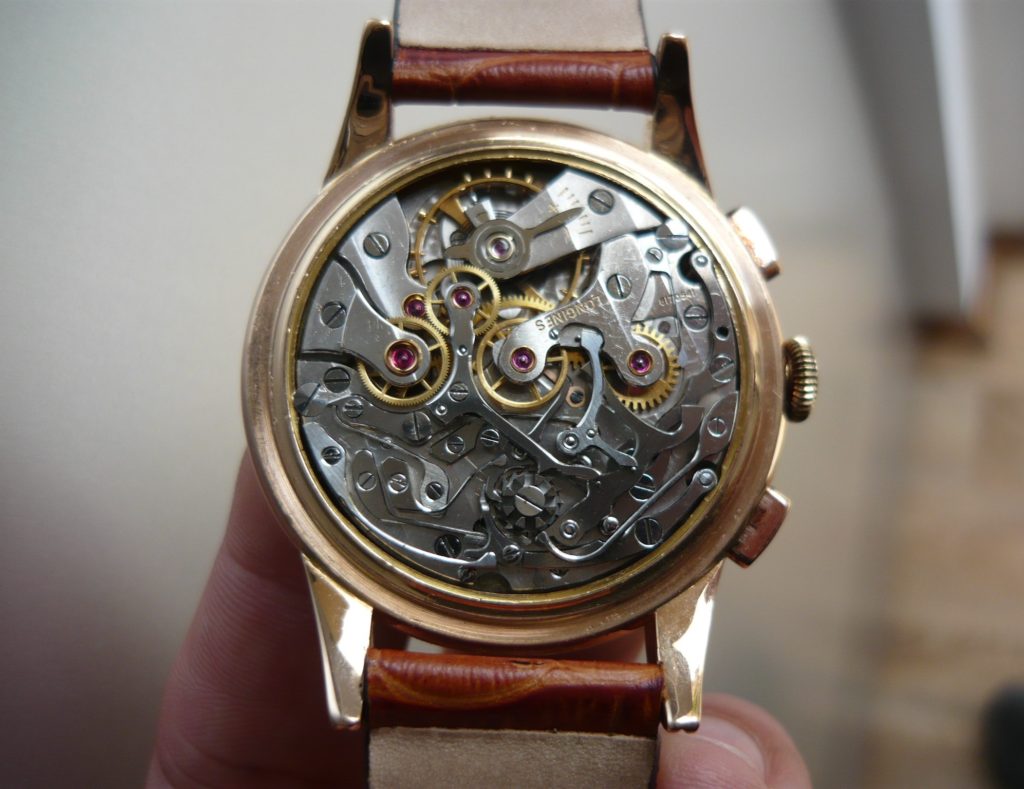
It is an integrated chronograph with a layout that makes it immediately recognizable, especially for the high level finishing and anglages, the orderly arrangement of linkages and leverages and … the large number of screws! Overall it is incredibly robust in every component and has been designed so well that it is still up-to-date and reliable like a modern movement. It is the last in-house chrono caliber, Longines stopped production in the early 70s, after renaming it “530” in 1970 with a new numbering starting with 50.xxx.xxx (used also for new Valjoux calibers and only time calibers produced from the beginning of 70s).
A final consideration. To appreciate Longines in-house chrono calibers we have to consider also that no other Maisons has produced (even today this is true) so many references for their chronographs like Longines. Considering all the series of 13.33z, 13zn and 30ch calibers, we can say that Longines is the first producer of manufacture high precision and quality chronographs. To be honest, the only other Maison that could be comparable for number of chrono references could be considered Universal Genéve. But Longines “level” overall is higher and Universal chrono calibers cannot be considered in house manufactured (the producer was Martel).
I own … and I use… many 30ch. I wear them because I find them very elegant (especially in gold) and sporty (especially in steel).
I have never had any serious problems with this caliber, which just needs to be periodically checked and kept away from bumps, dust, moisture and water (rain and sea water as a priority). But the dial at night is not visible … and this could be a true problem for a night flyer!
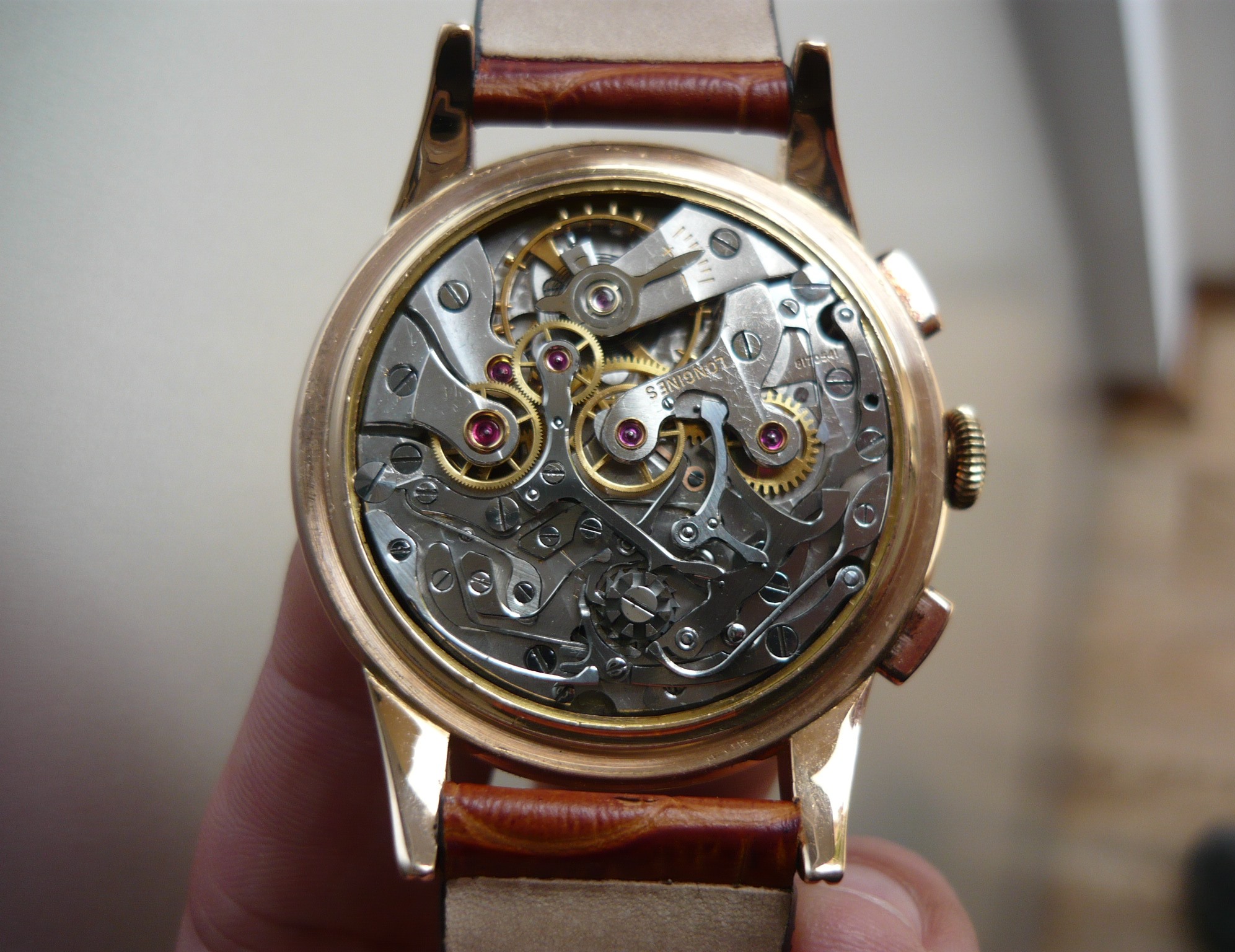
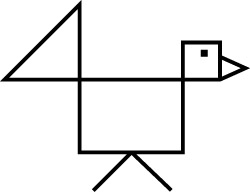
Leave a Reply
You must be logged in to post a comment.